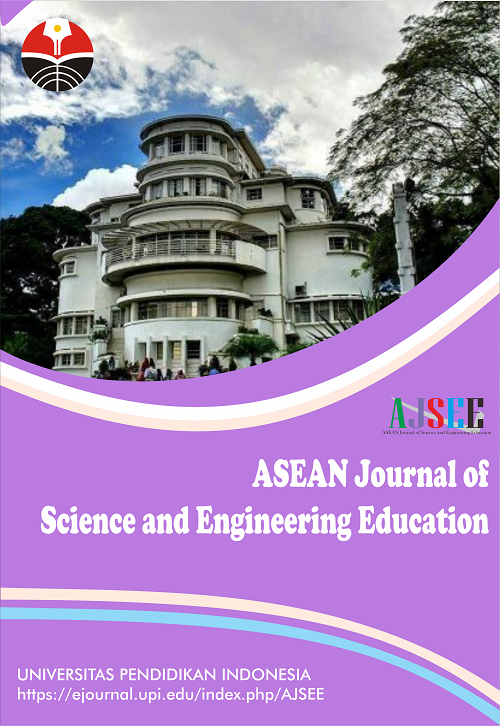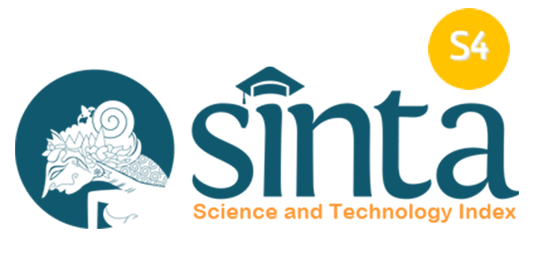Development of Web-Based Radioactivity Teaching Materials oriented-on Character Education for Highschool Student
Abstract
Keywords
Full Text:
PDFReferences
Abdullah, S., and Shariff, A. (2008). The effects of inquiry-based computer simulation with cooperative learning on scientific thinking and conceptual understanding of gas laws. Eurasia Journal of Mathematics, Science and Technology Education, 4(4), 387-398.
Ahmad, J., Sritharan, G., and Nasir, N. N. A. M. (2015). The effectiveness of video and pamphlets in influencing youth on environmental education. Jurnal Komunikasi: Malaysian Journal of Communication, 31(1), 281-296.
Akhlis, I., and Wahyuni, S. (2019, October). The development of web-based multimedia physic learning tool to enhance student’s character. Journal of Physics: Conference Series, 1321(3), 032083.
Akpan, J. P. (2002). Which comes first: computer simulation of dissection or a traditional laboratory practical method of dissection. Electronic Journal of Science Education, 6(4).
Arvanitidou, V., Antoniou, P., Michalopoulou, M., Diggelidis, N., and Serbezis, G. (2015). YouTube: an educational tool in environmental education. International Journal of Education and Research, 3(4), 81-92.
Ilhami, R., and Syahrani, S. (2021). Pendalaman materi standar isi dan standar proses kurikulum pendidikan Indonesia. Educational Journal: General and Specific Research, 1(1), 93-99.
Kalayci, S., and Humiston, K. R. (2015). Students’ attitudes towards collaborative tools in a virtual learning environment. Educational Process: International Journal, 4(1), 6.
Keech, J. J., Cole, K. L., Hagger, M. S., and Hamilton, K. (2020). The association between stress mindset and physical and psychological wellbeing: Testing a stress beliefs model in police officers. Psychology and Health, 35(11), 1306-1325.
Mohanty, S. P., Choppali, U., and Kougianos, E. (2016). Everything you wanted to know about smart cities: The Internet of things is the backbone. IEEE Consumer Electronics Magazine, 5(3), 60-70.
Nourollah, M., Fatemeh, M., and Farhad, J. (2015). A study of factors affecting juvenile delinquency. Biomedical and Pharmacology Journal, 8, 25-30.
Nugraha, M. G., Kaniawati, I., Rusdiana, D., and Kirana, K. H. (2016). Combination of inquiry learning model and computer simulation to improve mastery concept and the correlation with critical thinking skills (CTS). AIP Conference Proceedings, 1708(1), 070008.
Serevina, V., Koul, R., Morales, M. P., and Nugroho, D. A. (2022). Influence of website-based E-learning in the pandemic era: Improving students' creative thinking skills through educational management. International Journal on E-Learning, 21(1), 39-60.
Smetana, L. K., and Bell, R. L. (2012). Computer simulations to support science instruction and learning: A critical review of the literature. International Journal of Science Education, 34(9), 1337-1370.
Sulyanah, S., Hasanah, F. N., and Rahmania, S. U. (2021). Application of web based learning to measure students learning interest. Journal of Physics: Conference Series, 1764(1), 012099.
Suyatna, A., Nugraha, M. G., and Rakhmawati, I. (2019). ICT media utilization model to increase science process skills on natural science lessons in junior high school. Journal of Physics: Conference Series, 1280(5) 052004.
DOI: https://doi.org/10.17509/ajsee.v3i1.49176
Refbacks
- There are currently no refbacks.
Copyright (c) 2022 Universitas Pendidikan Indonesia

This work is licensed under a Creative Commons Attribution-ShareAlike 4.0 International License.














